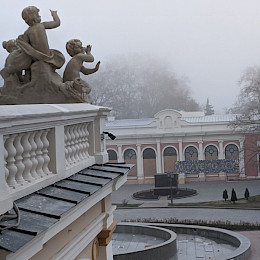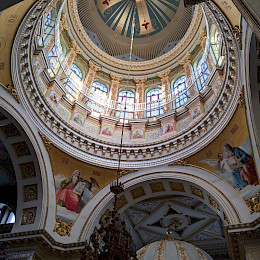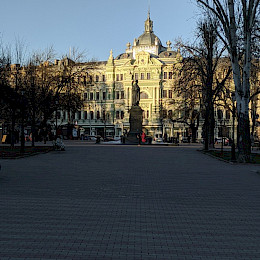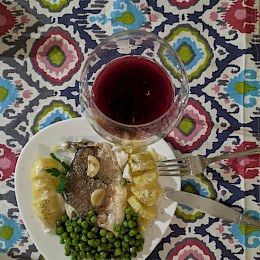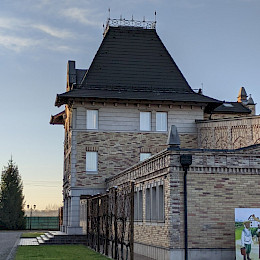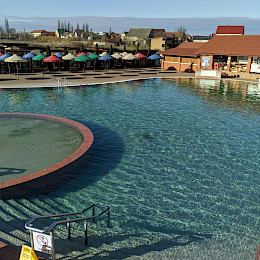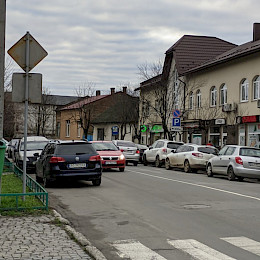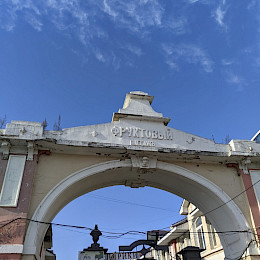Your Perfect trip to Ukraine
transport connection in Ukraine.
Travel Tips: Trains & Rail Passes
Buying European and Ukrainian train tickets is different.
1. In Ukraine, we do not have rail passes, but only Point-to-Point Tickets.
2. Ukraine is a big country, so trains are usually overnight. Therefore, you have a sleeping bed with sheets.
3. Conductors are present in all cars.
4. You can order a cup of tea on the way from the attendant and any time.
5. You can buy train tickets no earlier than three weeks before the trip. (!)
6. All of trains require all passengers to have seat reservations (except Suburb Trains).
The Cars.
Standard trains
1/ De Luxe or 1-cl. sleeper that called in Ukraine "SW" (old from sleep wagon) It is Compartment for 2 passengers
2/ Compartment or 2-cl. sleeper that called in Ukraine "coupe" - Compartment for 4th passengers
3/ Berth or 3-cl. sleeper - (Platz-Karte) It is the cheaper wagon and the most uncomfortable wagon with 54pax places.
InterCity IC+ Nowadays connected main cities only. It’s have Seating first class and second class
Where to Get Train Tickets
You have two main options for buying point-to-point tickets: through the website (or smartphone app.) of the national railways, and in person at train stations.
Online tickets are valid for a specific date and time and have strict refund restrictions, so read the fine print carefully.
On the Train: Tips for a Smart Ride
Expect a hassle-free landing. Throughout Ukraine, on night trains, conductors check tickets at the door of each car.
When boarding, you will show your train ticket to the conductor. This is a person who keeps thieves out so you can sleep peacefully.
In the case of an annual morning arrival, he will wake you up, or you will be ready to disembark.
Find a seat. Stow your luggage. Once you're on board, it's time to sit back and enjoy the journey.
Trains offer a "free" hot drink, usually included in the fare. But if you book tickets yourself, you can disable this option.
You can choose a cup of tea or coffee and pay cash directly to the conductor if you have not enabled this option or would like another cup of tea. And you can order a drink at any time convenient for you.
Use WCs — they're free. use the toilets on the train rather than those in the station (which can cost money, and are often less clean). Toilets on first-class cars are a cut above second-class toilet.
Sleeping on Trains
Sleeping while rolling down the tracks saves time and money: For every night you spend on the train, you gain a day for sightseeing and avoid the cost of a hotel.
Most overnight trains offer one or two different ways to sleep; the more comfortably you sleep, the more you pay.
Most couchettes (a sleeping berth) are the same in first and second class.
However, "SW" or First-Class wagon have more spacious two-berth couchette compartments.
Second class carriage, you will receive sheets, a pillow, clean linen and blankets on a bunk bed in a compartment for up to four people.
There is an additional charge of approximately USD 1.50 per set of sheets when booking a ticket. But you can refuse it.
When booking a seat, you can request a top or bottom bunk. Quadruple coupe has 2 seats bottom and 2 seats in the top.
Single-sleeper compartment is possible if you buy all beds in your compartment.
***************************************************
Long-Distance Buses
In most countries, trains are faster, more comfortable, and have more extensive schedules than long-distance buses.
But in Ukraine — especially to short distance and travel during daylight hours — buses are often the better (or only) option.
Bus routes are operated by multiple companies, each with its own timetables and fares. It is not so easy to identify bus operators due no English version.
Only international operator is Ecolines https://ecolines.net/
flixbus.com started operated in Ukraine in 2022 with several international routes.
You could to check and buy your bus tickets when you travel Ukraine use this link BUY BUS TICKET
you'll get a seat by buying your ticket online or dropping by the station to buy your ticket a few hours in advance.
For long trips, your ticket included a one bag. If your bag doesn't fit in the overhead storage space, you may be required to check it under the bus (without any fee).
Drivers may not speak English. Buses generally lack toilets, but they stop every two hours or so for a short break.
=================================
Travel Tips: Sleeping & Eating
=================================
Finding a Good Hotel
So, In Ukraine I recommended to check international hotel chain like Ibis or Radisson Blu.
Local hotel chains included Premier Hotels for quality nights and Reikartz hotels for more budget and business travels.
If a particular hotel appeals to you, visit the hotel website to glean additional information, check prices, and view photos of the rooms.
All big cities have many nice and private managing hotels. Ask me the city and I give you my list of the hotels.
Budget Hotels: What to Expect.
Ukraine has many inexpensive accommodations. In a typical budget hotel, a double room costs an average of $20 a night.
It may be small, private owned and smart hotel in the yards or a big old-fashioned hotel.
Rental vs. Hotel
A short-term vacation rental — whether an apartment, a house, or a room in a private residence — is a popular alternative to a hotel, especially if you plan to settle in one location for more than a few days.
you'll be able to find remarkably affordable deals through services like Airbnb. Some places allow you to book for a single night.
Only one tip for you - Check out the location on a map — one person's "close to downtown" is another's "boondocks."
Hostels:
Since accommodations account for a major share of most travelers' budget, hosteling is one of the easiest ways to make a trip affordable. You're paying just for what you need, and access to a kitchen can also seriously trim your food budget.
But millions of travelers — including many older adventurers who could afford a nice hotel — love hostels just as much for the chance to connect with fellow travelers from around the world. Hosteling is a philosophy.
Hostels are providing cheap beds where you sleep alongside strangers for $5–10 per night.
In general, hostels offer no-frills accommodations in clean dormitories, which typically hold four to eight bunk beds (sometimes many more), possibly along with lockers and a sink.
Bathrooms are usually just down the hall and likely have a room with a few toilet stalls, and another with showers. Most hostels offer kitchen facilities, Wi-Fi, and a self-service laundry.
In some areas, budget hotels can make more sense than hostels. Especially if you're traveling as a couple, a cheap hotel room can beat the price of a private hostel room.
Finding and Booking Hostel Beds
HostelWorld (https://www.hostelworld.com/) is the dominant online resource for hostel reviews and bookings (although you may pay a bit less by reserving directly with the hostel).
ask me advise about your next accomodation
Cheap Eats
If your wallet is as empty as your stomach, find a cheap, humble cafe: Bakeries are a good place to get simple sandwiches or something cheap with a more regional flavor. Also, Bakeries can be found in large supermarkets (also open on weekends!!!).
Each country has its own analogue of a hot dog place, where you can grab a bite on the go - kiosks with Turkish kebab and falafel are widely distributed in Ukraine. Shawarma is now in trend in Ukraine.
But you need to remember that food prices in Ukraine are very affordable and you can eat reasonable in any Ukrainian restaurant for no more than 10-15 dollars per person.
UKRAINIAN CUISINE
Ukrainian cuisine is a combination of various culinary traditions of the people of Ukraine.
A good vacation is impossible without delicious food. No trip around the country is possible without getting to know its culinary highlights!
You can get a different culinary experience in different regions of Ukraine.
In the big cities — Kyiv, Lviv, Odesa — the restaurant and bar culture is booming. The food there is a part of the experience and local spirit.
The Dishes
- Borscht, Traditional Ukrainian beet soup, which is included on the list of Ukraine’s heritage, has a centuries-old history.
- Vareniki is a kind of dumpling. dumplings made with fillings such as mashed potatoes and fried onions, boiled meat, cheese or sweet cherries.
- Chicken Kyiv is a fresh chicken filet fried with a piece of butter. The dish has brought fame to Ukraine but now it is not so easy to find it in a restaurant.
- Deruny, or potato pancakes, are a perfect course for breakfast or dinner. They are usually freshly fried or baked
- Syrniki. Fans of sweet flavors for breakfast will fall in love with syrniki. Made of cottage cheese, flour, eggs and sugar, the dish is nourishing and airy. After being gently fried in a pan, syrniki is topped with jam and sour cream.
- Holodets. This strange dish shocks tourists. But, for Ukrainians, it is the central dish served at all celebrations. Holodets is made of meat broth, frozen to a jelly-like state, with pieces of meat inside. As usually, its prepared at families but may be found in specific local restaurants.
The local Beverages
Kompot: a sweet beverage made of dried or fresh fruits or berries boiled in water.
Uzvar: a specific type of kompot made of dried fruit, mainly apples, pears, and prunes.
Kvass: a sweet-and-sour sparkling beverage brewed from yeast, sugar, and dried rye bread. Its taste like nonalcoholic beer.
*******************************************************************************************************************************************************
Kyiv
Kyiv is the capital and the most populous city of Ukraine.
Its population was 3mln in 2021? making Kyiv one of the most populous city in Europe. It’s near the same with Rome and Madrid, and a little bit bigger than Paris
here’s the listing of European cities by population within city limits at the time of press.
London, UK: 9,002,500
Berlin, Germany: 3,664,000
Madrid, Spain: 3,305,400
Kyiv, Ukraine: 2,920,873
Rome, Italy: 2,844,750
Paris, France: 2,139,907
Vienna, Austria: 1,930,000
Warsaw, Poland: 1,860,000
Kyiv is one of the oldest city in Eastern Europe. The city was existed like a commercial center as early as the 5th century.
A settlement located along Dnieper River on the great trade route between Scandinavia’s countries and Constantinople (the famous Route from Varagians to Greeks)
The city was captured by the Viking king Oleg in 862y. (IX Century). Under Varagians (Viking) rule, the city became a capital of Kievan Rus, the first Slavic State.
The city prospered next 300years when Kievan Rus accepted Christianity (King Vladimir the Great 988y), and started construction beautiful monasteries and churches (Yaroslava the Wise 1050).
It was one of the biggest kingdoms of Europe in 11th Century.
Completely destroyed during the Mongol invasions (1240) it was provincial capital for the centuries.
From 1934 Kyiv was the capital of Soviet Ukraine. Following the collapse of Soviet Union in 1991, Kyiv remained Ukraine's capital.
*The main Attractions*
Kyiv most famous historical architecture complex are the St. Sophia Cathedral (the first foundation was laid in 1011) and the Kyiv Pechersk Lavra (Monastery of the Covers, its foundation as the cave monastery in 1051).
Noteworthy historical architectural landmarks also include several Eastern Orthodox churches such as St. Michael’s Cathedral, St. Andreas’s, St. Vladimir’s.
Andriyivskiy Descent is one of the best-known historic streets and major tourist attraction in Kyiv.
A local favorite is Khreschatyk Street, which is the main avenue in Kiev. It stretches from the European Square through the Maidan and to Bessarabska Square where the Besarabsky Market is located.
May be Khreshchatyk is one of the shortest and widest central streets in the world. its width is 130 meters
During World War II, almost every building on the street was mined with explosive.! explosions were set off by radio-controlled fuses from over 400 kilometers away. The demolition of over three hundred buildings on Khreshchatyk became the first operation in history where the long-distance radio-controlled explosions were used for military purposes.
Following the war, Khreshchatyk was rebuilt in the 1950s and new buildings were erected in the Neoclassical Stalinist architectural style.
In the winter of 2004, Khreshchatyk and Maidan Nezalezhnosti became the center of the main public protests of the Orange Revolution.
In late 2013 Khreshchatyk also became one of the centers of the Euromaidan protests.
++++++++++++++++
L’viv
It is the largest city in western Ukraine, and the sixth-largest in Ukraine, with a population of 717,273 (2022 est.). L’viv is one of the main cultural centers of Ukraine.
We first heard of this city in the XIIIth century (1256), although people lived there even earlier. In 1272, the city became the capital of the Galicia-Volyn Kingdom and king of Danila I
It was named after his son Leo (lion). The toponym may best be translated into English as Leo's lands or Leo's City
It was luckily position of the city on the old trade Silk Road. In these parts of the world the road went along the Dniester River from Genoese colony Mon Castro to city of Krakow in Poland.
An interesting fact is that rivers flow from this area both to the south and to the north. The Dniester River flows into the Black Sea. The river Bug flows into the river Vistula (Wisla). It is the longest river in Poland flowing into the Baltic Sea. Very good location for the business!
The next period started from the middle of XIVth century when these lands became part of the Kingdom of Poland. The city was often called in the Latin manner Leo polis and it’s took the Magdeburg Law (internal autonomy within city granted by the local ruler). As a part of Poland (and later Polish–Lithuanian Commonwealth) the city was known as Lwów and became the capital of the Ruthenian Voivodeship. It built stone houses and the Castle in XVth C. The population is made up of Germans, Poles, Ukrainians, Armenians and Jews.
The city was annexed to Austria in 1772 and then to Habsburg Empire. It again changed its name to Lemberg, its Germanic name. Lemberg was the capital of this province called the Kingdom of Galicia and Lodomeria untill the First WWar in XX century. During this period the population was 200 000 and included 50% Poles, 30% Jews and 20% Ukrainians.
It was part of Poland again for 20 years after World War I. The city, which was the third biggest in Poland, became one of the most important centres of science, sports and culture of Poland. For example, the Lwów School of Mathematics embodied a rich mathematical tradition; the school gathered at the Scottish Café and maintained a notebook of problems and results.
After II WWar this region become part of USSR.
City was outpost of the Catholicism during six centuries. Orthodox Christianity prevalent in the east of this land.
At the end of XIXth C. there were the Opera House, the University and many rich buildings.
The city notable for its buildings and arts. aside from that a town famous for its coffee shops and colorful restaurants.
***********************
Odesa
Odesa is the third most populous city and municipality in Ukraine and a major seaport and transport hub located in the south-west of the country, with about one mln inhabitants
Before the founding of Odessa as a city, there was an ancient Greek settlement here in the 4th-6th centuries BC. And its name comes from the ancient Greek city of Odessos, which was wrongly considered to be located here.
the first writing notes about it was in early XVth C. (1421) when the first castle was build and sea port loaded grain to Istanbul. So there are long-standing traditions of grain-carrying business in Odessa.
Odesa was founded as a city in 1794. But the city grew so fast that by the end of the 19th century it became the fourth largest city in the Russian Empire.
Odesa is a very specialty city, historically international from the first days of its existence. When the Russian Empire seized the area from the Ottomans there was only a small fortress here.
And the government invited many people to live and work on the absolutely empty lands. So, Greeks, Bulgarian, French and German people came. Maybe it was the same situation and the same time like Europeans went to America.
There was free sea port for 40 years in the 19th century, so it was the huge influential factor of prosperity.
Its population by the beginning of the 20th century was 500,000 and included 33% of Jews. And it was the third largest Jewish city in the world after New York and Warsaw.
Odesa and L’viv are the most beautiful cities of Ukraine. The architecture of the city is absolutely amazing. It really looks like a European city.
*Attraction*
The Odessa opera house is the oldest theatre in the city. The first theatre was opened in 1810 and destroyed by the fire in 1873. The modern building was opened in 1887 and is one of the nicest Opera houses in Europe.
It was a project of the same Austrian architects who designed the Vienna and Dresden opera houses.
The Odesa Catacombs are a labyrinth-like network of tunnels located under the city of Odesa. Their oldest element is karst caves, which arose more than 3.7 million years ago. The Odessa catacombs are the largest in the World. They are 3000 kilometers long.
There are some different types of excursions in the Odessa catacombs. The most popular type for everybody is the underground museum «Secrets of underground Odessa».
There are a lot of exhibitions in the museum. Numerous expositions are devoted to different pages of the history of the city.
Black Sea coast. The “Health Path”, between the beaches of Lanzheron and Arcadia, is a cult route in Odessa. The route is a combination of a seaside promenade and an asphalt multifunctional path above the beach. Up to 6km one way. We recommend walking along the water in one direction, and then along the park paths in the other direction.
Archaeological Museum is one of the oldest museums in Ukraine which was founded in 1825.
Odessa Museum of Western and Eastern Art is located the heart of Odesa, in beautiful Abaza palace of 19th century, whose collections represent exclusively the art of Europe, including famous paintings of the 17th-18th centuries.
The Odesa Fine Arts Museum is located in the ancient Naryshkin Palace, built in the 1820s in the best traditions of classicism. The collection including paintings by some of the best-known Russian and Ukrainian artists of late 19th and early 20th century.
++++
[bus]
